Marne in the Great War
Marne, the name of the two decisive battles of the Great War; the name of an area that still today, through its deep scars, bears witness to the bitterness of the ceaseless fighting that continued throughout the Great War.
Emblematic monuments and numerous cemeteries delineate the historic front. A multitude of nationalities are represented here and the soil of Marne respectfully hosts the largest number of military graves of all French departments with 164,145 soldiers' tombs.
Still today Marne carries deep scars bearing witness to the bitterness of the ceaseless fighting that continued throughout the Great War.
- Mondement, monument de la 1ère bataille de la Marne
- Dormans, mémorial des deux batailles de la Marne
- Le fort de la Pompelle, site historique et musée recueillant des collections de qualité
- L’ossuaire de Navarin (batailles de Champagne)
- La chapelle russe de Saint-Hilaire-le-Grand
- Monument américain du Blanc Mont
- La Main de Massiges et la cote 191
- Le centre d’interprétation de Suippes « Marne 14-18 »
- L’ossuaire de la Gruerie et le camp de la vallée Moreau (Argonne)
The landscape is marked with a large central plain, framed by the forest of Ardennes to the north, the Parisian plateau to the west and the mountains of Argonne to the East. The lightly undulating plain has practically just one obstacle; the thalweg of the river Marne and the axes that cross it have always proven to be of strategic importance.

A SPECIFIC AND DECISIVE FRONT
At the end of the summer of 1914, the German offensive movement was stopped at Marne and the plain was to represent the stakes of the first Battle of the Marne from the marshes of Saint-Gond to the valley of the Saulx. But this victory served only as a respite and the front became established in the north of the department. The opposing sides proved to be well matched and came face to face in tragic attrition warfare. For the first time in history we witnessed the formation of a continuous front that crossed the entire department: from Chemin des Dames to Argonne, the confrontations tortured the landscapes, pulverised trees, destroyed villages and led to an appalling number of victims.
The entire year of 1915 was marked by a series of French offensives (in Champagne) and German offensives (in Argonne), leading to the total, permanent destruction of Tahure, Ripont, Hurlus, Perthes-les-Hurlus and Mesnil-les-Hurlus. The territory gained from the attacks was minimal and the totally exhausted men from both camps tried progressively to organise their respective positions as best they could.

REINFORCEMENTS FROM THE OTHER SIDE OF THE WORLD
From 1916, relative calm was established on the Champagne front. Thanks to agreements with Russia, two Russian brigades were sent to Champagne. They took up position in turn between Suippes and Reims (Espérance farm, Fort Herbillon, Saint-Thierry mountains). In spring 1917, the Battle of the Hills broke out alongside the Second Battle of the Aisne, the Russians took back the village of Courcy, but 3 more villages disappeared from the map: Nauroy, Moronvilliers and Sapigneul, as well as the hamlet of La Neuville which, one by one, were wiped out for ever.
FROM THE SECOND BATTLE OF THE MARNE TOWARDS PEACE
In 1918, Germany wanted to put an end to the conflict, launching several offensives in the spring. Once again it was in the heart of Marne that the decisive action was played out. In July the allies launched a counter attack and the Germans were forced back: the second Battle of the Marne had just taken place and was to be the starting point for the recapture of the territory. In the autumn the front moved away towards Ardennes and the Armistice was signed on 11 November.

THE POST-WAR PERIOD
After the war, a spectacle of desolation presented itself to refugees who, on their return, barely recognised their homeland. In addition to the destruction, the soil was flooded with non-exploded munitions, rendering it wild and dangerous. More than anywhere else, the Marne area holds in its soil the beginnings of the construction of memory: 52 French and foreign necropolises, 8 villages lost forever, ossuaries and monuments of impressive dimensions convey the amplitude of the disaster and bear witness to the suffering of our forebears.
It is therefore no coincidence that it was in Marne that the idea of a concept of lasting world peace was created by Léon Bourgeois, a Marnais and father of the League of Nations who won the Nobel Peace Prize in 1920. And at the same time, due to its emblematic past as a martyr city, Reims became the symbol of Franco-German reconciliation and peace between peoples.
Aujourd’hui encore, la Marne témoigne de son attachement à ne pas oublier, au travers en particulier de son patrimoine mémoriel imposant et singulier. De nombreux sites sont à découvrir et permettent de mieux comprendre le passé.
To discover
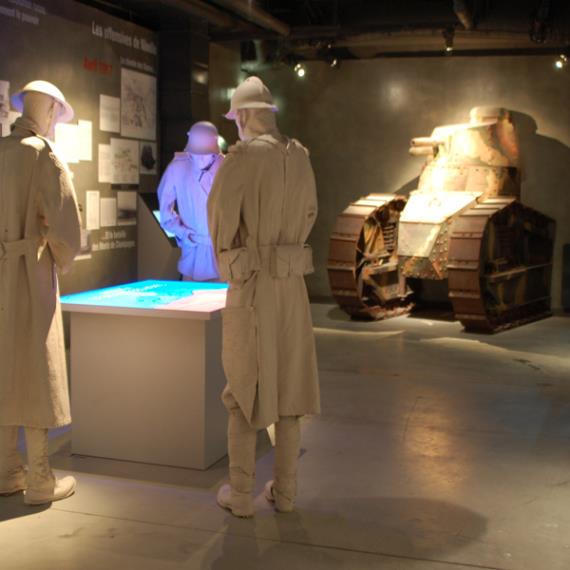
Centre d'Interprétation Marne 14-18
In this discovery centre dedicated to the events that occurred during the First World War on the front lines of the Champagne region, you...
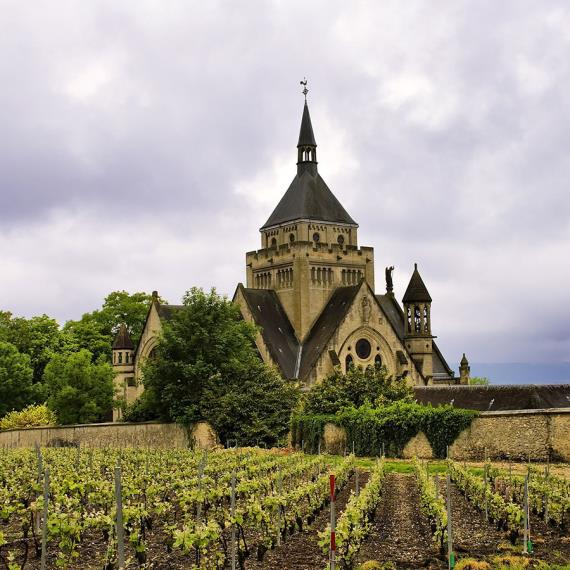
Mémorial National Dormans 1914-1918
Built in 1921, on a site that was chosen by Marshal Foch to commemorate the two Battles of the Marne, this memorial is a grouping...
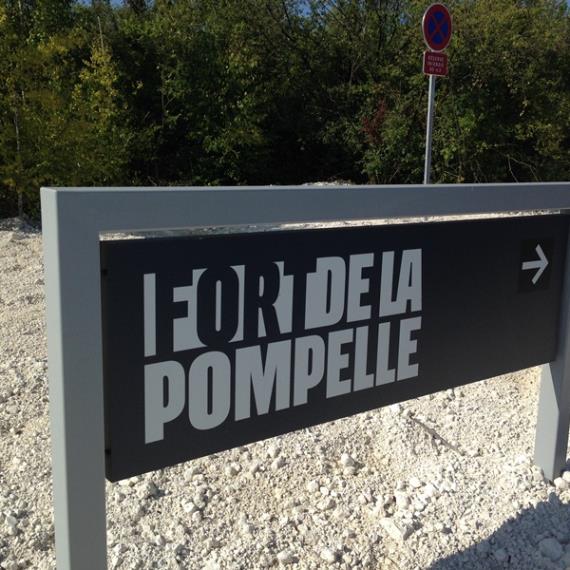
Musée du Fort de la Pompelle
A Séré de Rivières – type fort built from 1880 to 1883 and a listed building. It houses the 1914-1918 War Museum and exhibits a collection...
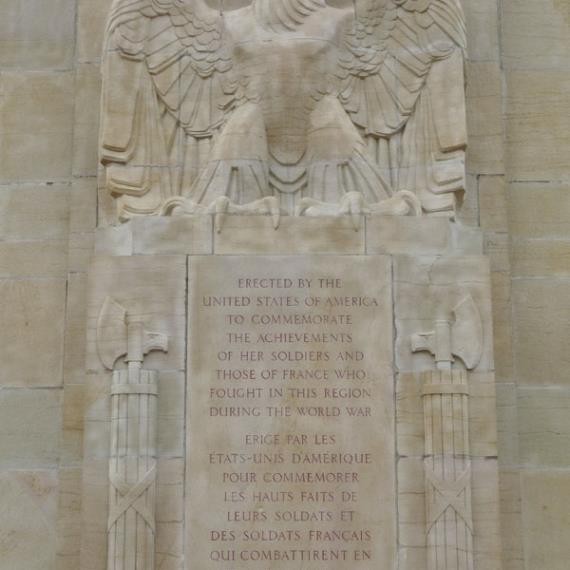
Monument Américain du Blanc Mont
The memorial is a stone tower commemorating the achievements of the 70,000 Americans who fought in the region during the summer and autumn...
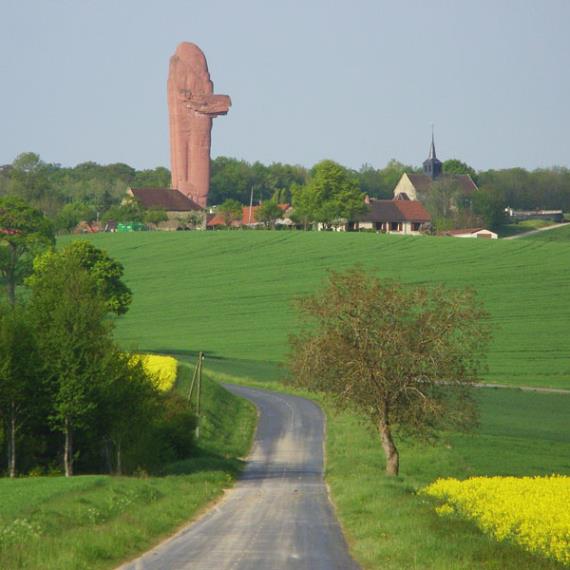
Monument de la 1ère victoire de la Marne
The monument is a 35-metre high monolith erected to commemorate the first victory of the Marne in September 1914.

Le Camp de la Vallée Moreau
This camp, located between Vienne-le-Château and Binarville, was a rest camp occupied by the 83rd Regiment of the German Landwehr. It was...